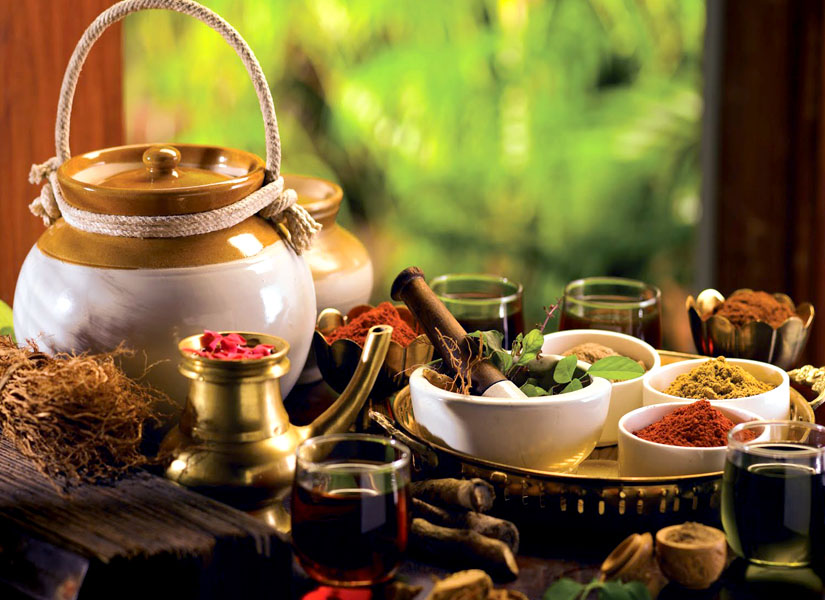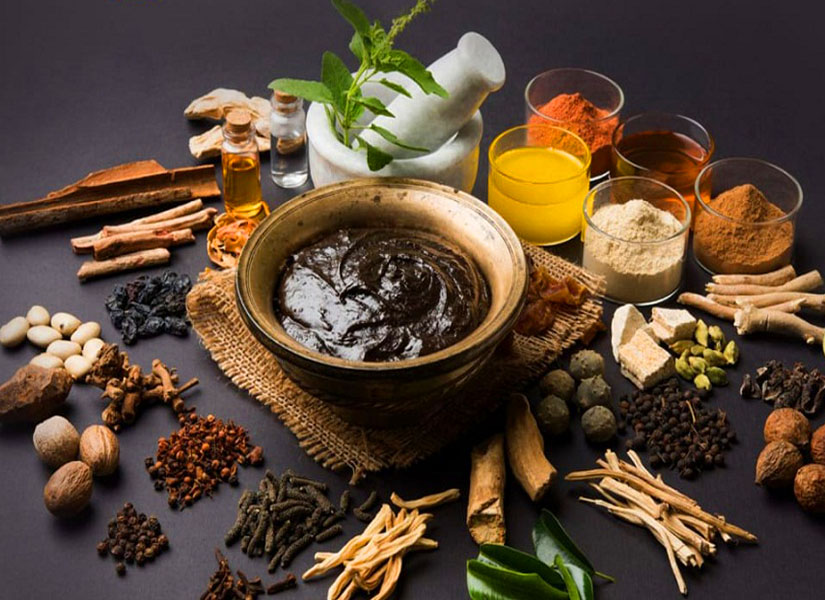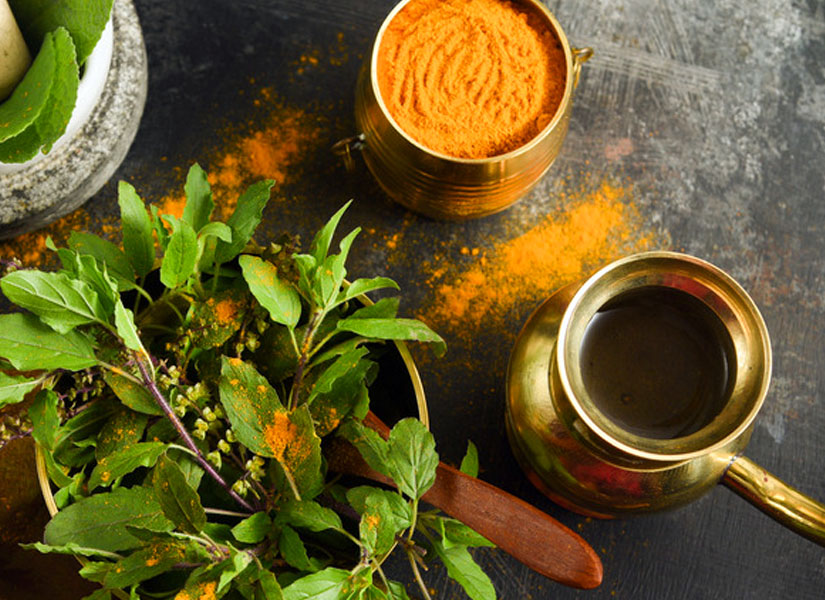The practice of Ayurveda
The Indian Medical Council was set up in 1971 by the Indian government to establish maintenance of standards for undergraduate and postgraduate education. It establishes suitable qualifications in Indian medicine and recognizes various forms of traditional practice including Ayurveda, Unani, and Siddha. Projects have been undertaken to integrate the indigenous Indian and Western forms of medicine. Most Ayurvedic practitioners work in rural areas, providing health care to at least 500 million people in India alone. They therefore represent a major force for primary health care, and their training and deployment are important to the government of India.
Like scientific medicine, Ayurveda has both preventive and curative aspects. The preventive component emphasizes the need for a strict code of personal and social hygiene, the details of which depend upon individual, climatic, and environmental needs. Bodily exercises, the use of herbal preparations, and Yoga form a part of the remedial measures. The curative aspects of Ayurveda involve the use of herbal medicines, external preparations, physiotherapy, and diet. It is a principle of Ayurveda that the preventive and therapeutic measures be adapted to the personal requirements of each patient.
Ayurveda claims to treat a range of disorders
In India, Ayurveda is considered a form of medical care, equal to conventional Western medicine, traditional Chinese medicine, naturopathic medicine, and homeopathic medicine. Practitioners of Ayurveda in India undergo state-recognized, institutionalized training. Currently, Ayurvedic practitioners are not licensed in the United States, and there is no national standard for Ayurvedic training or certification. However, Ayurvedic schools have gained approval as educational institutions in some states.
Many Ayurvedic materials have not been thoroughly studied in either Western or Indian research. Some of the products used in Ayurvedic medicine contain herbs, metals, minerals, or other materials that may be harmful if used improperly or without the direction of a trained practitioner. Ayurvedic medicines are regulated as dietary supplements rather than as drugs in the United States, so they are not required to meet the safety and efficacy standards for conventional medicines. These medicines can interact, or work against, the effects of Western medicines. Investigate the training and background of Ayurvedic practitioners whom you intend to use.
It's important to discuss any Ayurvedic treatments that you use with your doctor. Women who are pregnant or nursing, or people who are thinking of using Ayurvedic therapy to treat a child, should consult their healthcare provider. It is important to make sure that any diagnosis of a disease or condition has been made by a healthcare provider who has substantial conventional medical training and experience with managing that disease or condition. While Ayurveda can have positive effects when used as a complementary therapy in combination with standard, conventional medical care, it should not replace standard, conventional medical care, especially when treating serious conditions.
A range of Ayurvedic therapies
- dietary changes
- herbal medicine, including combining herbs with metals, minerals or gems (known as rasha shastra medicines) that can take the form of pellets, tablets and powders of various colours and scents)
- acupuncture (practiced by some practitioners)
- massage
- meditation
- breathing exercises
- panchakarma (5 actions) – a specialised treatment consisting of 5 therapies including emesis (vomiting), enemas and blood-letting, which are meant to detoxify the body and balance the doshas (in Ayurveda, the body’s 3 vital energies)
- sound therapy, including the use of mantras
Quality Control and Quality Assurance
Quality is not only limited to the range of products we produce but also in every aspect of our operations. Quality for us is a tool that helps in safeguarding the contentment in the wellness of our customers. Every herbal product or ayurvedic treatment we provide is evaluated on a spectrum of frameworks related to the ingredients & ratio of constituents and their effect on the human body. They are also assessed according to the acceptance criteria of all relevant national & international standards.DEEP AYURVEDA believes in total quality management and total quality compliance. Our post-production products are tested by govt. Lab as well as by the renowned laboratory of India. We also follow the phytochemical analysis procedure to ensure raw herb quality and efficacy.
Many Ayurvedic materials have not been thoroughly studied in either Western or Indian research. Some of the products used in Ayurvedic medicine contain herbs, metals, minerals, or other materials that may be harmful if used improperly or without the direction of a trained practitioner. Ayurvedic medicines are regulated as dietary supplements rather than as drugs in the United States, so they are not required to meet the safety and efficacy standards for conventional medicines. These medicines can interact, or work against, the effects of Western medicines. Investigate the training and background of Ayurvedic practitioners whom you intend to use.
The concepts of universal interconnectedness, the body's constitution (prakriti), and life forces (doshas) are the primary basis of ayurvedic medicine. Goals of treatment aid the person by eliminating impurities, reducing symptoms, increasing resistance to disease, reducing worry, and increasing harmony in life. Herbs and other plants, including oils and common spices, are used extensively in Ayurvedic treatment.














